Abstract
Fifteen patients presented with foveal hypoplasia as an isolated ocular finding. The characteristic findings associated with this entity are a visual acuity of 6/21 or worse, nystagmus, and a typical ophthalmoscopic appearance of the macular area, including absent or abnormal maculofoveal reflexes, unclear definition of the maculofoveal area, and capillaries running abnormally close to the presumed macular area, some of them even crossing the horizontal meridian. Fluorescein angiography revealed a variable and incomplete filtering effect of the choroidal fluorescence in the macular area, suggesting abnormalities in the amount and distribution of macular pigments. The fundal findings of isolated foveal hypoplasia, although typical, are very subtle and often difficult to detect, especially because of the accompanying nystagmus. For this reason we suspect that foveal hypoplasia may be more common than is generally believed.
Full text
PDF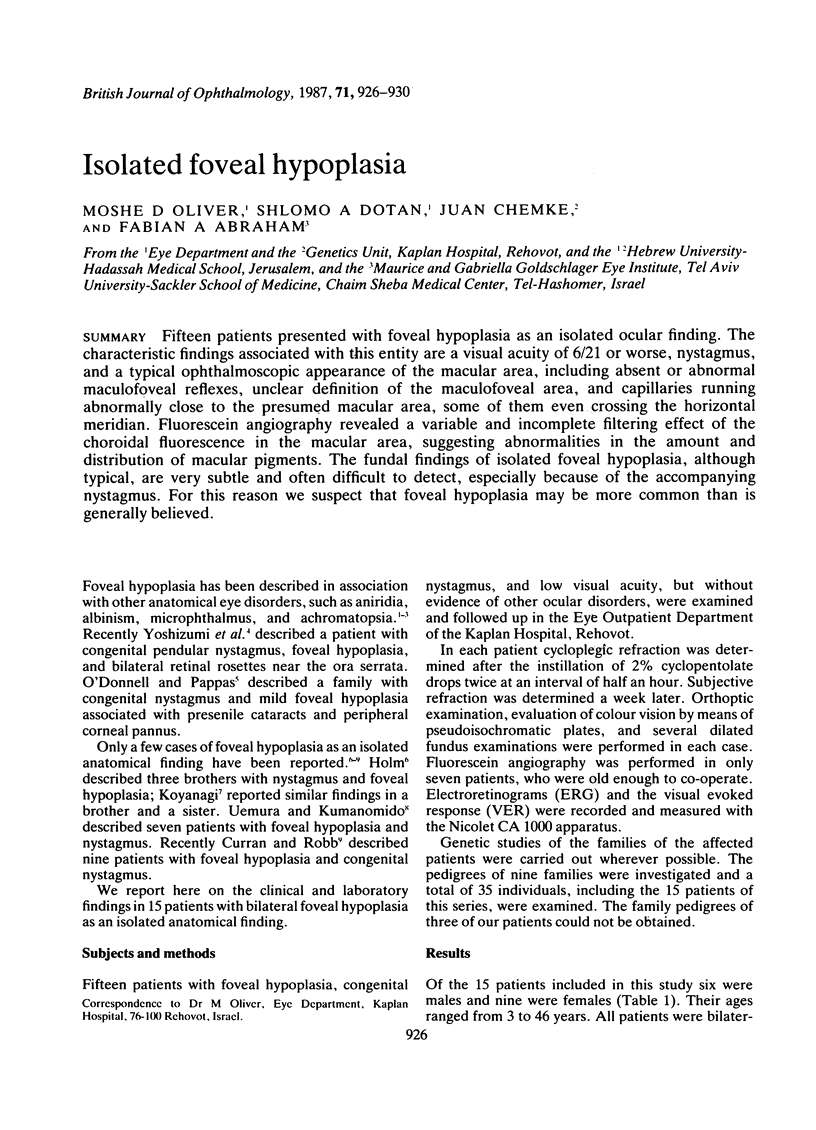
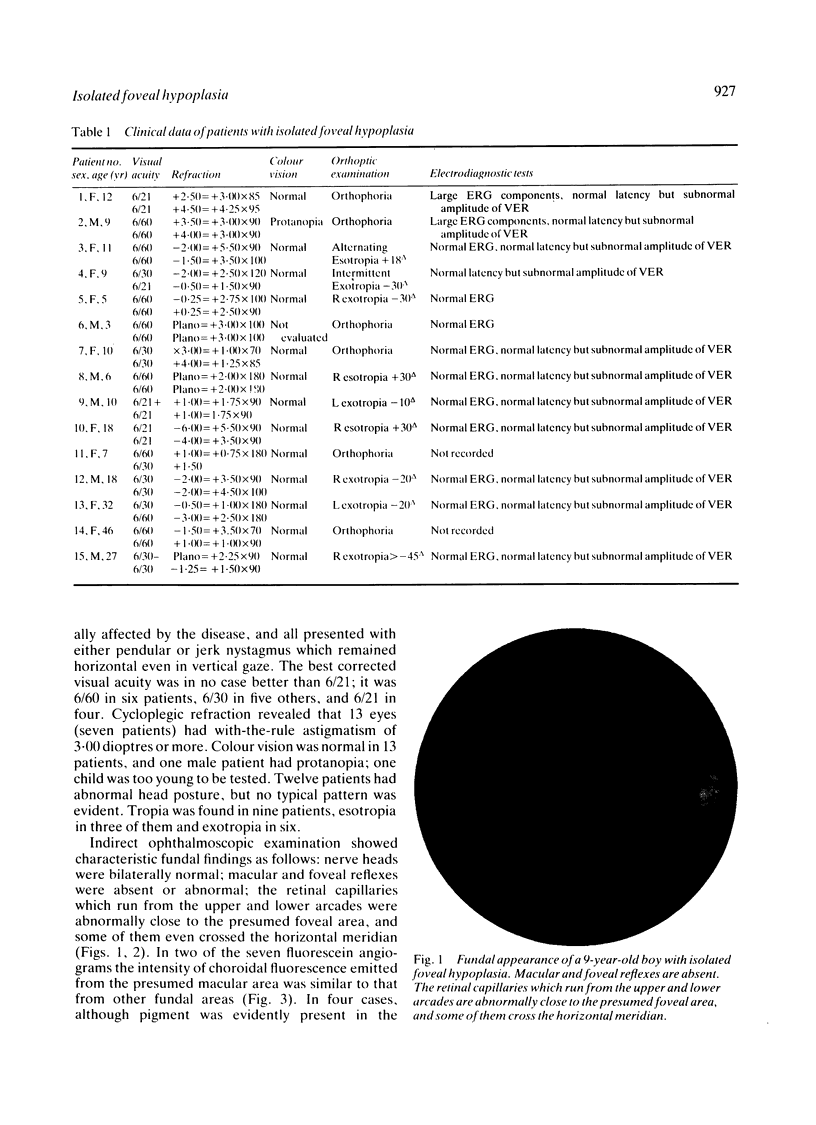
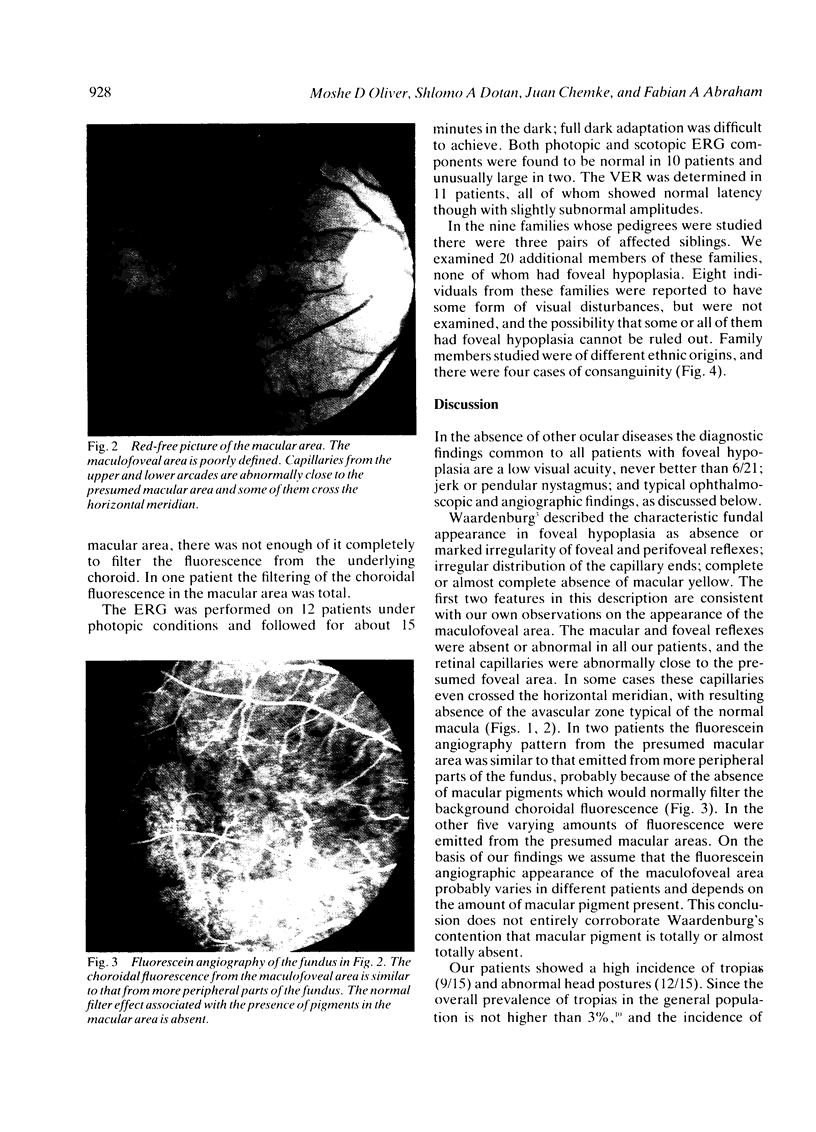
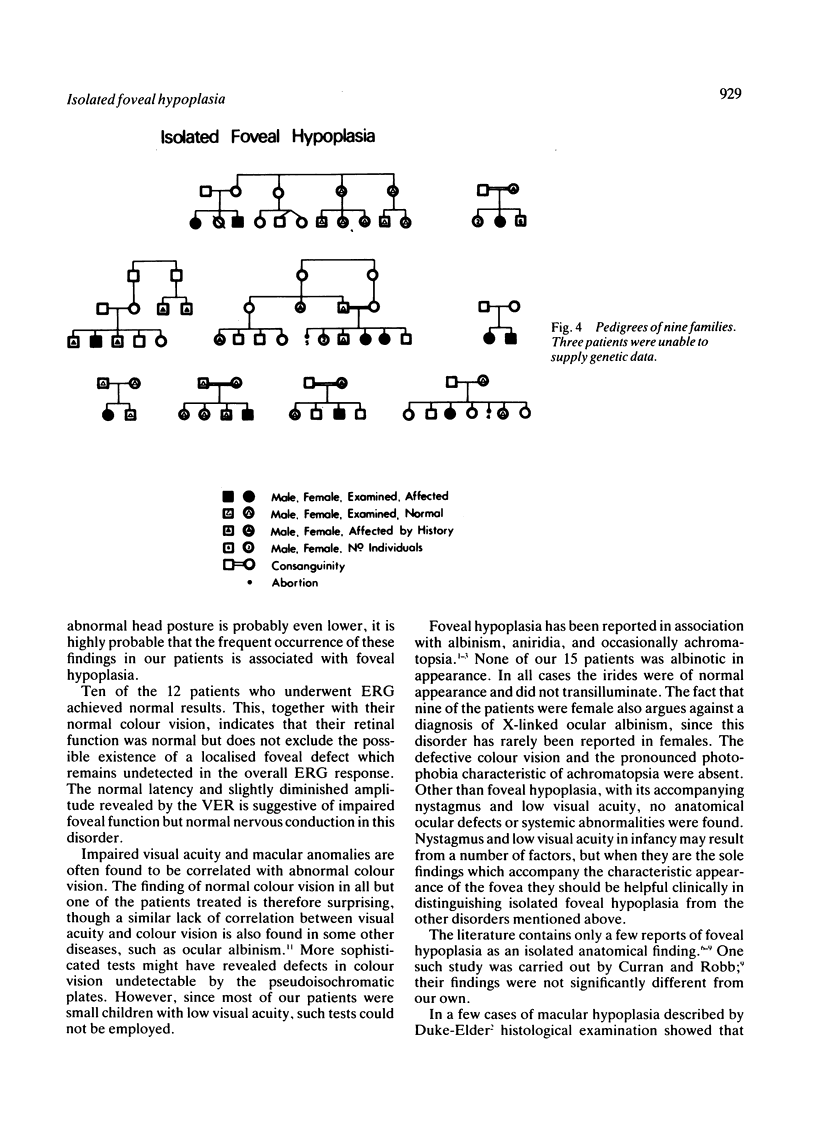
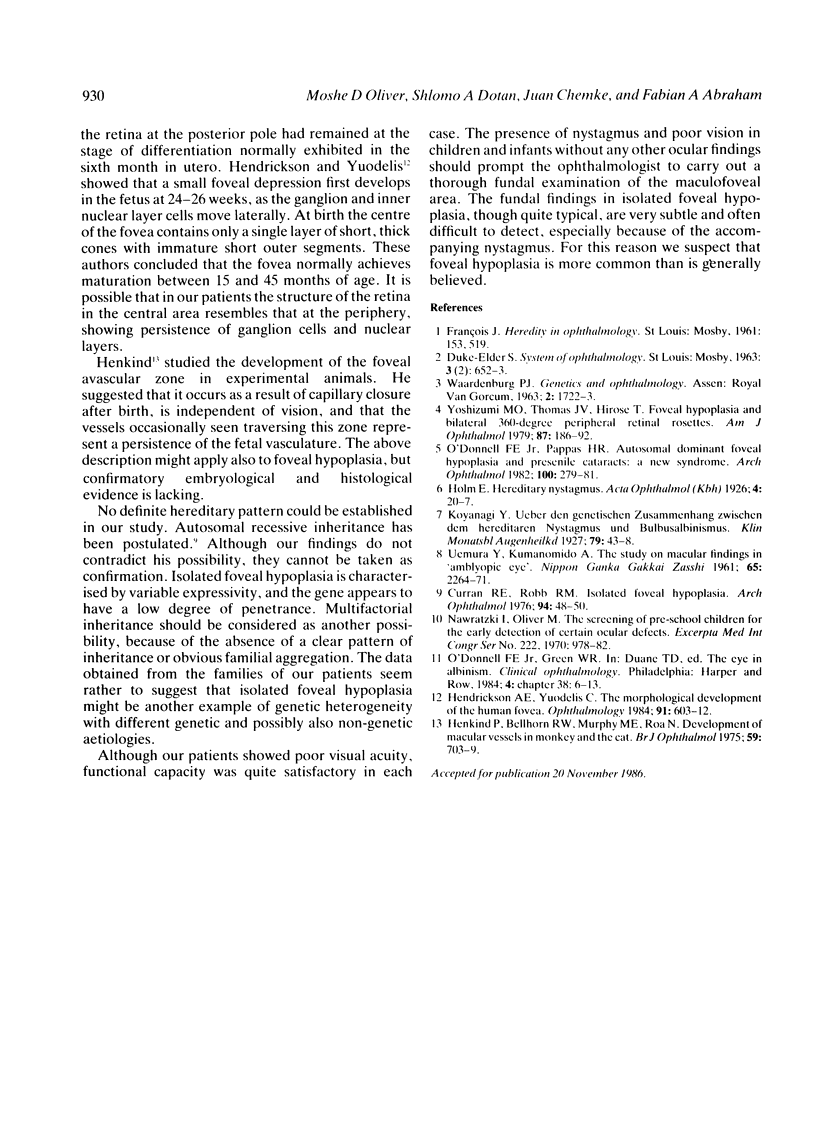
Images in this article
Selected References
These references are in PubMed. This may not be the complete list of references from this article.
- Curran R. E., Robb R. M. Isolated foveal hypoplasia. Arch Ophthalmol. 1976 Jan;94(1):48–50. doi: 10.1001/archopht.1976.03910030014005. [DOI] [PubMed] [Google Scholar]
- Hendrickson A. E., Yuodelis C. The morphological development of the human fovea. Ophthalmology. 1984 Jun;91(6):603–612. doi: 10.1016/s0161-6420(84)34247-6. [DOI] [PubMed] [Google Scholar]
- O'Donnell F. E., Jr, Pappas H. R. Autosomal dominant foveal hypoplasia and presenile cataracts. A new syndrome. Arch Ophthalmol. 1982 Feb;100(2):279–281. doi: 10.1001/archopht.1982.01030030281009. [DOI] [PubMed] [Google Scholar]
- UEMURA Y., KUMANOMIDO A. [The study on macular findings in "amblyopic eye". Report I. Macular coloboma, macular aplasia and macular hypoplasia]. Nippon Ganka Gakkai Zasshi. 1961 Nov 10;65:2264–2271. [PubMed] [Google Scholar]





